How do you tell a butterfly from a moth? Sometimes they look alike and children (and some adults) may not have a clear understanding of what separates the two.
Tips for telling a butterfly from a moth
1. Is it active during the day?
Butterflies are usually seen flying about during the day, whereas moths fly at night. If the insect is hiding under a leaf during the day, it is probably a moth.
There are a few exceptions, of course. Sometimes hummingbird moths may fly during the day, for example, but you can quickly tell they are moths by some of their other features listed below.
Activity: Look for moths around outdoor lights at night. Look for butterflies around flowers during the day. Parks and museums may have butterfly walks during the day or may offer events at night where they put out blacklights to attract night-flying moths.
2. Butterflies have knobby antennae.
Butterflies generally have long, slender antennae, often with a knob or enlarged segment at the tip, like on this white peacock butterfly.
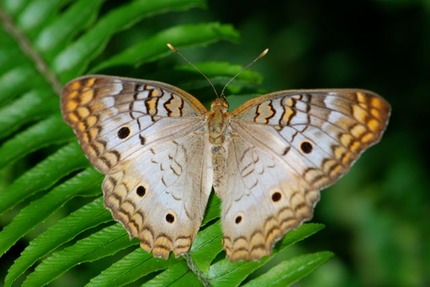
Moths have thicker antennae that lack a knob, like this white-lined sphinx moth.
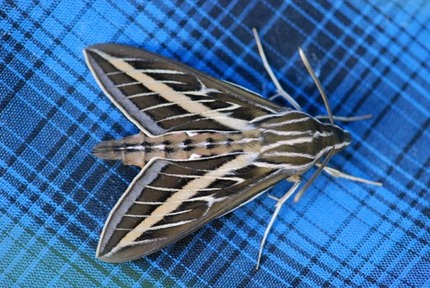
Male moths often have antennae that look like small feathers.
3. Is the body fuzzy?
If you think about it, it is cooler at night and insects activity is tied to temperature. A cooler insect is usually slower than a warmer one. Moths often have layers of what look like hair (technically scales) that serve as insulation, allowing them to be able to move freely at night. Think of it as moths wearing sweaters.
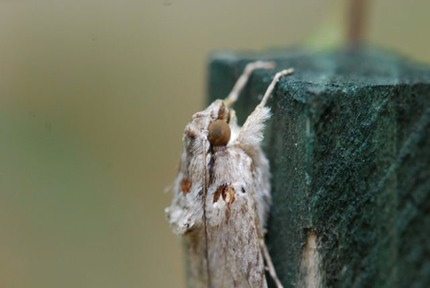
The hairy scales cover the head, body and sometimes even the legs of moths.
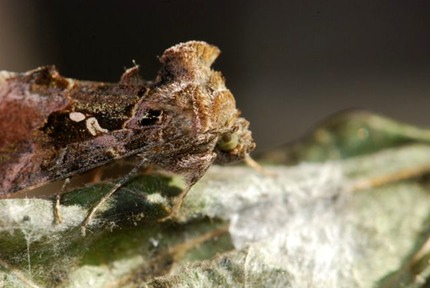
This moth even has tufts of scales. What a hairstyle!
4. Moths have cocoons, butterflies have uncovered pupae called chyrsalids.
Both moths and butterflies go through 4 stages during metamorphosis: egg, larvae (caterpillar), pupa and adult. The eggs and larvae of butterflies and moths aren’t all that much different, but the pupa and adult stages do show distinct differences.
A moth larva that pupates above the ground often weaves a silk bag around itself called a “cocoon” before it pupates. Then it changes inside the bag (cocoon), forming a pupa.

The butterfly pupa is called a chrysalis or chrysalid.
Another difference is that moth pupae are often reddish brown, like the one below.
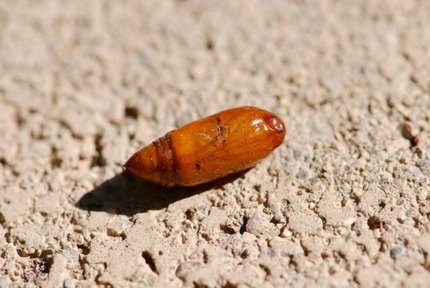
Butterfly chrysalids may be colorful or uniquely shaped compared to the pupa of the moth, They may be bright green, golden, speckled or other bright colors, although some are the same color as tree bark to blend in.
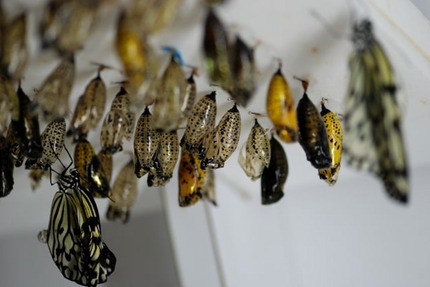
5. Wing position
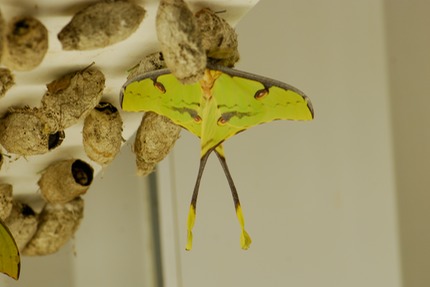
Moths often keep their wings draped over their backs, or held out horizontally, like in the photograph above.
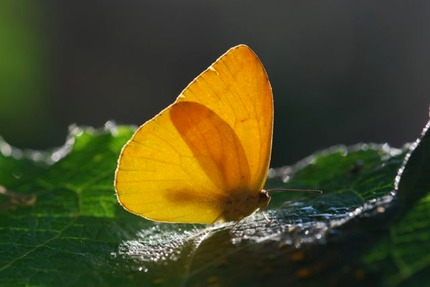
Butterflies are much more likely to hold their wings closely pressed together vertically over their backs.
Apply What you've learned:
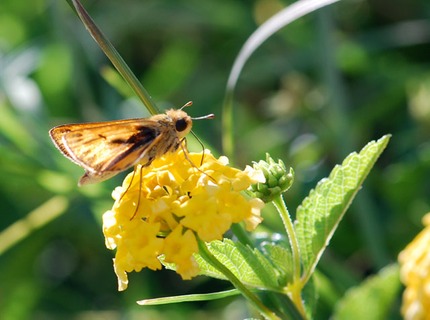
Here's a small, brown insect. Is it a butterfly or is it a moth?
Activity: Now that you know the differences between butterflies and moths, gather some pictures or draw some of butterflies and moths. Make a poster, a slideshow or a video to show others about what you've learned!


